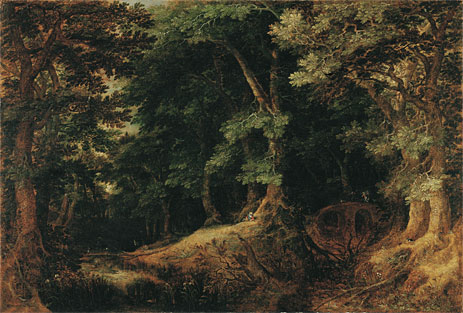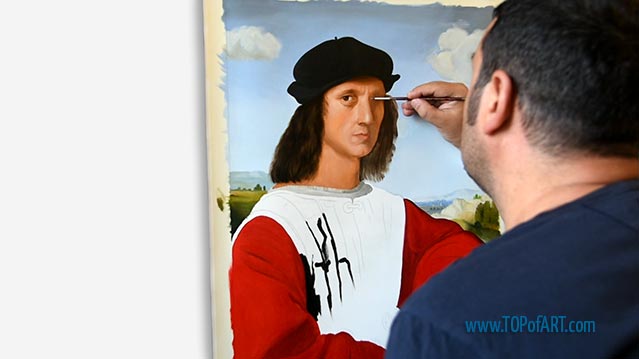Forest Landscape, 1598 Gillis van Coninxloo (1544-1607)
Location: Liechtenstein Museum Vienna AustriaOriginal Size: 42 x 61 cm
Own a museum-quality reproduction of Forest Landscape by Gillis van Coninxloo (1598), exclusively hand-painted in oils on linen canvas by European artists with academic training. Each masterpiece is created with meticulous craftsmanship, capturing the exceptional quality and authentic brushwork of the original painting.
Oil Painting Reproduction
If you want a different size than the offered
Description
Painted by European Аrtists with Academic Education
Museum Quality
+ 4 cm (1.6") Margins for Stretching
Creation Time: 8-9 Weeks
Creation Process
We create our paintings with museum quality and covering the highest academic standards. Once we get your order, it will be entirely hand-painted with oil on canvas. All the materials we use are the highest level, being totally artist graded painting materials and linen canvas.
We will add 1.6" (4 cm) additional blank canvas all over the painting for stretching.
High quality and detailing in every inch are time consuming. The reproduction of Gillis van Coninxloo also needs time to dry in order to be completely ready for shipping, as this is crucial to not be damaged during transportation.
Based on the size, level of detail and complexity we need 8-9 weeks to complete the process.
In case the delivery date needs to be extended in time, or we are overloaded with requests, there will be an email sent to you sharing the new timelines of production and delivery.
TOPofART wants to remind you to keep patient, in order to get you the highest quality, being our mission to fulfill your expectations.
We not stretch and frame our oil paintings due to several reasons:
Painting reproduction is a high quality expensive product, which we cannot risk to damage by sending it being stretched.
Also, there are postal restrictions, regarding the size of the shipment.
Additionally, due to the dimensions of the stretched canvas, the shipment price may exceed the price of the product itself.
You can stretch and frame your painting in your local frame-shop.
Delivery
Once the painting Forest Landscape is ready and dry, it will be shipped to your delivery address. The canvas will be rolled-up in a secure postal tube.
We offer free shipping as well as paid express transportation services.
After adding your artwork to the shopping cart, you will be able to check the delivery price using the Estimate Shipping and Tax tool.
Museum Quality
The paintings we create are only of museum quality. Our academy graduated artists will never allow a compromise in the quality and detail of the ordered painting. TOPofART do not work, and will never allow ourselves to work with low quality studios from the Far East. We are based in Europe, and quality is our highest priority.
Additional Information
The chromatic register is restrained yet infinitely modulated. Coninxloo layers deep sap greens and smoky viridians, cooled by bluish half‑tones, then warms the palette with ochres and russets that flicker across bark and bracken. Occasional sparks of vermilion on the peasant’s tunic and flashes of lapis in his breeches punctuate the gloom, sharpening the viewer’s awareness of the enveloping darkness. Subtle transitions between cool and warm greens conjure the sensation of damp leaf‑mould and filtered light; the eye oscillates between feeling immersed in shade and lured toward the glade’s tenuous radiance.
Close inspection reveals a virtuoso technique. The panel supports a sequence of translucent glazes laid over a finely hatched under‑drawing; delicate, calligraphic touches articulate twig, frond and fraying moss without ever descending into botanical pedantry. Coninxloo’s brush alternates between feathery stipples for distant foliage and heavier, dragging strokes that suggest encrusted bark. Minute deposits of impasto pick out lichen on a trunk or highlights on rippling water, animating the surface while preserving atmospheric unity.
Compositionally, the eye is ushered along a diagonal axis: from the pond’s mirror‑dark foreground, past the reclining figure toward the sun‑touched bank, then into the recesses where bridge and soldiers barely register before vision is absorbed by the towering canopy. This choreography of light and scale impresses the insignificance of mankind before nature, a theme consonant with late‑sixteenth‑century shifts toward autonomous landscape painting. Having left Antwerp and the cosmopolitan Palatinate, Coninxloo distilled the lessons of the Frankenthal school into a rhetoric of immersive naturalism that profoundly influenced Jan Brueghel the Elder and Roelant Savery. The painting demonstrates how, on the eve of the Dutch Golden Age, landscape could be both empirical study and metaphysical meditation.

